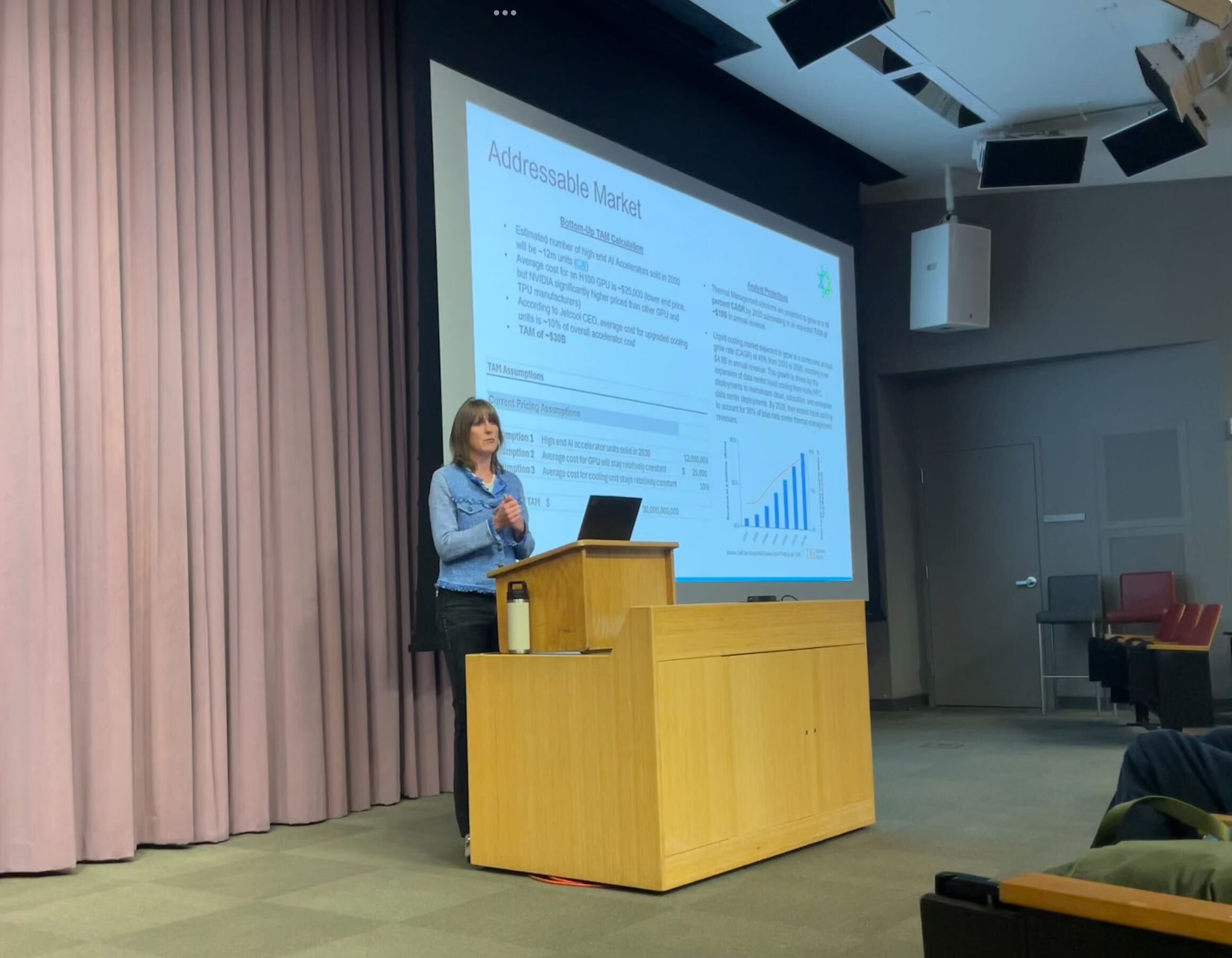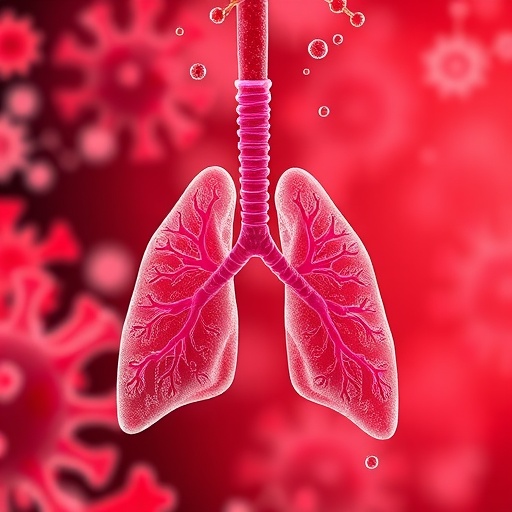Trojan horse bacteria sneak cancer-killing viruses into tumors – ScienceDaily

Report on a Novel Cancer Therapy Aligned with Sustainable Development Goals
A recent study from Columbia Engineering details the development of an innovative cancer therapy platform, CAPPSID (Coordinated Activity of Prokaryote and Picornavirus for Safe Intracellular Delivery). This research represents a significant advancement in biomedical engineering and contributes directly to the achievement of several United Nations Sustainable Development Goals (SDGs), most notably SDG 3 (Good Health and Well-being).
Methodology: A Multi-Organism System for Targeted Treatment
The CAPPSID system engineers a synergistic relationship between bacteria and viruses to target and destroy cancerous tumors. This approach addresses key challenges in existing cancer therapies, enhancing both efficacy and safety, which are central tenets of SDG 3.
Overcoming Immune System Barriers
A primary obstacle in oncolytic virus therapy is neutralization by the patient’s immune system. The CAPPSID platform resolves this by using bacteria as a transport vehicle.
- The bacteria function as an “invisibility cloak,” hiding the therapeutic virus from circulating antibodies.
- This mechanism allows the virus to be smuggled past the body’s defenses and delivered directly to the tumor site.
- This innovation is critical for advancing health outcomes, as it enables the use of viruses to which patients may already have immunity.
Precision Tumor Targeting
The system leverages the natural tendencies of both the bacterial and viral components to ensure precise delivery, a key factor in improving well-being under SDG 3.
- The bacterial component, Salmonella typhimurium, naturally migrates to the low-oxygen, nutrient-rich environment characteristic of tumors.
- Once inside the tumor, the bacteria invade cancer cells and lyse, releasing the viral genome directly where it is needed.
- This dual-action targeting ensures the therapeutic payload penetrates and spreads throughout the tumor, a challenge that has limited single-organism approaches.
Engineered Safety Mechanisms
To ensure the therapy aligns with the principle of “do no harm” implicit in SDG 3, the researchers engineered a robust safety control.
- The virus is synthetically dependent on a specific molecule (a protease) that can only be supplied by the co-delivered bacteria.
- Since the bacteria are confined to the tumor, the virus cannot mature or spread in healthy tissue, even if it escapes the tumor site.
- This safeguard is essential for the safe clinical translation of living therapies.
Implications for Sustainable Development Goals
This research is a prime example of how scientific innovation can drive progress on global development targets.
SDG 3: Good Health and Well-being
The primary impact of this technology is its potential to improve health outcomes for cancer patients.
- It directly addresses SDG Target 3.4, which aims to reduce premature mortality from non-communicable diseases like cancer.
- By creating a safer and more effective treatment, it promotes well-being and offers new hope for patients with solid tumors.
- The platform’s design enhances the safety of living medicines, a crucial step for their integration into standard clinical practice.
SDG 9: Industry, Innovation, and Infrastructure
The development of CAPPSID is a landmark achievement in scientific research and technological innovation.
- The platform represents a novel and technically advanced fusion of synthetic biology, bacteriology, and virology, contributing to SDG Target 9.5 (Enhance scientific research).
- The filing of a patent application highlights its potential for industrial application and the development of a new class of therapeutics.
SDG 17: Partnerships for the Goals
The project’s success underscores the importance of collaboration in achieving scientific breakthroughs.
- The partnership between researchers at Columbia Engineering and The Rockefeller University exemplifies the multi-stakeholder cooperation called for in SDG 17.
- Such collaborations are vital for translating complex scientific concepts into tangible solutions that can address global health challenges.
Future Directions and Clinical Translation
The research team is actively working to move this technology from the laboratory to clinical application, furthering its potential impact on SDG 3.
- Testing the approach in a wider range of cancer types, mouse models, and with different viral payloads.
- Developing a “toolkit” of viral therapies that can be adapted to specific conditions within a tumor.
- Evaluating the system’s compatibility with bacterial strains that have already demonstrated safety in human clinical trials.
- Pursuing clinical translation to make this living medicine available to patients.
SDGs Addressed in the Article
-
SDG 3: Good Health and Well-being
The article’s central theme is the development of a novel cancer therapy. This directly aligns with SDG 3, which aims to ensure healthy lives and promote well-being for all at all ages. The research on the CAPPSID system is a significant step towards creating more effective treatments for cancer, a major non-communicable disease that causes premature mortality worldwide.
-
SDG 9: Industry, Innovation, and Infrastructure
The article highlights cutting-edge scientific research and technological innovation. The development of the CAPPSID system by the Synthetic Biological Systems Lab at Columbia Engineering is a prime example of enhancing scientific research and fostering innovation, which is the core of SDG 9. The article details a “technically advanced and novel platform” that bridges bacterial engineering with synthetic virology, showcasing progress in technological capabilities.
-
SDG 17: Partnerships for the Goals
The research described is a collaborative effort. The article explicitly mentions the collaboration between the team at Columbia Engineering, led by Tal Danino, and Charles M. Rice, an expert from The Rockefeller University. This partnership between different institutions to achieve a common scientific goal exemplifies the spirit of SDG 17, which emphasizes the importance of collaboration to achieve sustainable development.
Specific SDG Targets Identified
-
Target 3.4: Reduce premature mortality from non-communicable diseases
The entire research project is focused on creating a more effective therapy for solid tumors. By aiming to “deliver and activate a therapeutic virus directly inside tumor cells,” the technology directly contributes to the goal of treating cancer and, consequently, reducing premature mortality from this non-communicable disease.
-
Target 9.5: Enhance scientific research and encourage innovation
The article is a testament to this target. It describes a novel approach that combines bacteria and viruses, representing a significant innovation in cancer therapy. The statement that this is “probably our most technically advanced and novel platform to date” and the filing of a patent application (WO2024254419A2) are direct outcomes of enhanced scientific research and innovation efforts at a leading academic institution.
-
Target 17.6: Enhance cooperation on and access to science, technology and innovation
The collaboration between Columbia Engineering and The Rockefeller University is a clear example of cooperation in science and technology. Furthermore, the publication of the study in Nature Biomedical Engineering and the filing of a patent are mechanisms for knowledge sharing and disseminating innovation, which are key components of this target.
Indicators Mentioned or Implied
-
Implied Indicator for Target 3.4: Effectiveness of new treatments for non-communicable diseases
While the article does not provide mortality statistics, the validation of the technology in mice serves as a proxy indicator for its potential effectiveness. The success of the system in targeting tumors and killing cancer cells in a preclinical model implies progress towards developing a therapy that could one day contribute to reducing the mortality rate from cancer (Indicator 3.4.1).
-
Implied Indicator for Target 9.5: Number of patents and scientific publications
The article explicitly mentions two key outputs that can be used as indicators for innovation and research activity. First, the study was “published recently in Nature Biomedical Engineering,” a high-impact scientific journal. Second, the researchers “have filed a patent application (WO2024254419A2) with the U.S. Patent and Trademark Office.” These are concrete measures of research and development output.
-
Implied Indicator for Target 17.6: Number of collaborative research projects between institutions
The article states that “Charles M. Rice, an expert in virology at The Rockefeller University, collaborated with the Columbia team.” This specific mention of a cross-institutional partnership serves as a qualitative indicator of scientific cooperation, which is essential for advancing complex research goals.
SDGs, Targets, and Indicators Analysis
| SDGs | Targets | Indicators |
|---|---|---|
| SDG 3: Good Health and Well-being | Target 3.4: By 2030, reduce by one third premature mortality from non-communicable diseases through prevention and treatment. | Implied Indicator: Development and validation of new, effective cancer therapies. The article provides evidence through the successful testing of the CAPPSID system in mice. |
| SDG 9: Industry, Innovation, and Infrastructure | Target 9.5: Enhance scientific research, upgrade the technological capabilities of industrial sectors… encouraging innovation. | Specific Indicators: The publication of research in Nature Biomedical Engineering and the filing of a patent application (WO2024254419A2) are mentioned as direct outputs of this innovative research. |
| SDG 17: Partnerships for the Goals | Target 17.6: Enhance… international cooperation on and access to science, technology and innovation and enhance knowledge sharing. | Implied Indicator: The existence of a collaborative research project, as evidenced by the stated partnership between Columbia Engineering and The Rockefeller University. |
Source: sciencedaily.com

What is Your Reaction?
 Like
0
Like
0
 Dislike
0
Dislike
0
 Love
0
Love
0
 Funny
0
Funny
0
 Angry
0
Angry
0
 Sad
0
Sad
0
 Wow
0
Wow
0

















































:focal(1500,1000)/https://media.globalcitizen.org/a6/9a/a69a4720-d8a1-4715-b596-18738d03c05c/rotary_polio_hero_image.jpg?#)






/countries/sri-lanka/photo-credit---dmc-sri-lanka.tmb-1200v.jpg?sfvrsn=dc298bcc_1#)
















